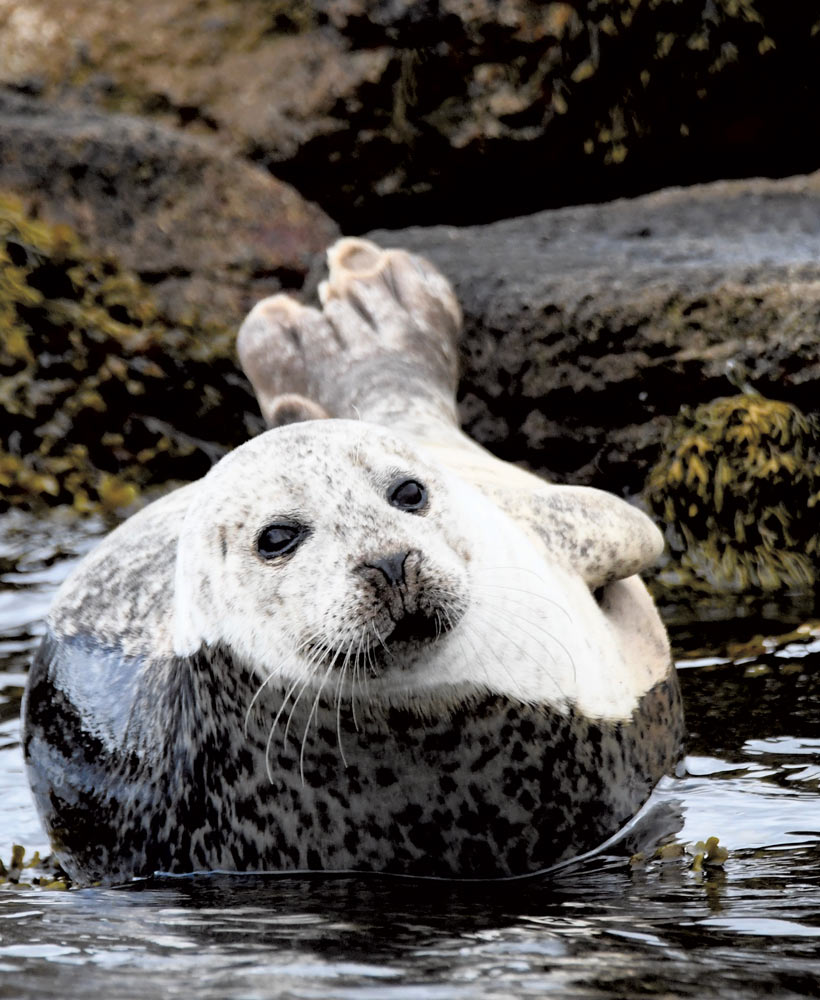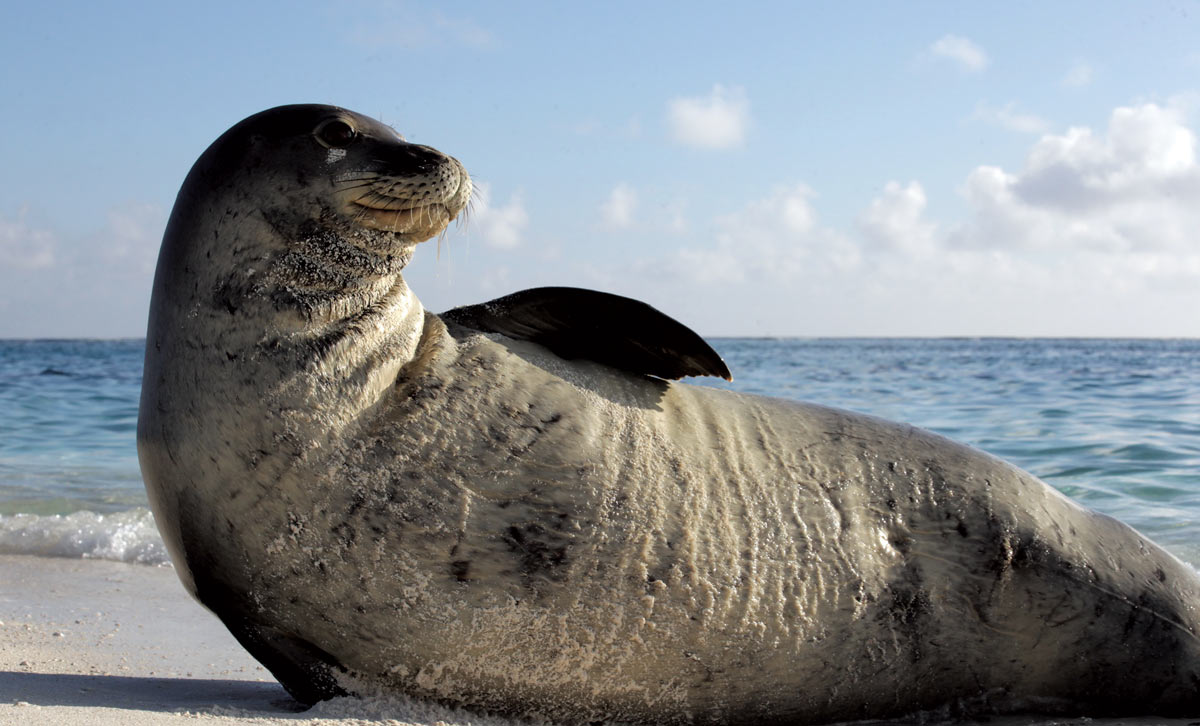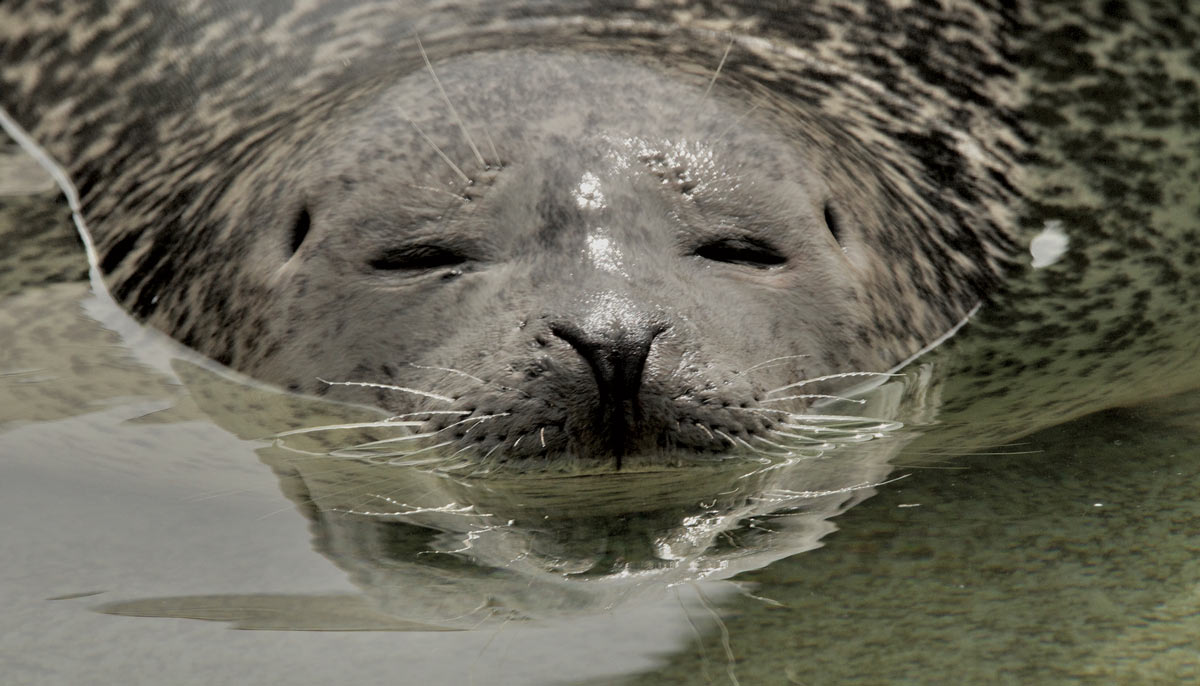Those of us who enjoy watching local harbor seals and elephant seals will be happy to know there are seal-sighting opportunities in coastal locations far and wide. Seals can be spotted from the northern Atlantic to Florida, and from Hawaii to Tasmania.
FAMILY
Phocedai
GENUS
Phoca
The Atlantic harbor seal, also known as harbour or common seal in Europe, is the same species as the Pacific harbor seal, Phoca vitulina.
The southern elephant seal, Mirounga leonina, is the largest marine mammal that is not a whale. A male southern elephant seal is about 40 percent heavier than a male northern elephant seal. The southern male weighs up to nearly 9,000 pounds (4,000 kg) and reaches lengths of almost 19 feet (5.8 m). Females are much small, weighing up to 2,000 pounds (900 kg) and reaching lengths of a little over 9 feet (3 m).
RANGE
Atlantic harbor seals range from the northern Atlantic to the Baltic and North seas. In North America they can be found from Canada and Greenland to New York. Some wander as far south as Florida.
Southern elephant seals, which spend most of their lives at sea, feed on the edge of the Antarctic continent.
HABITAT
Southern elephant seals come ashore to remote breeding colonies in subantarctic waters, from South Georgia, the Falklands and Argentina to South African islands in the subantarctic Indian Ocean, and subantarctic islands in the Pacific Ocean south of Tasmania and New Zealand.
FUN FACT
Individual harbor seals possess a unique pattern of spots, either dark on a light background or light on a dark background.

Atlantic harbor seal, Portree, Isle of Skye, Scotland. Photo by Karen Straus.
Other Potential Seal Encounters
MONK SEAL: The Hawaiian monk seal, Monachus schauinslandi, and the Mediterranean monk seal, Monachus monachus, are the only true seals found in tropical waters. Monk seals are thought to be named for a fold of skin that resembles a monk’s cowl, or because of their habit of being alone or in small groups, or because of the short hairs on their head, said to resemble a monk’s. Its Hawaiian name, Ilio-holo-i-ka-uaua, means “dog that runs in rough water.”
The Hawaiian monk seal is endemic to the Hawaiian archipelago and is the official state mammal of Hawaii. The Mediterranean monk seal is now found only in four rugged or remote coastline areas that are inaccessible to humans. Both populations are critically endangered. A third species, the Caribbean monk seal, became extinct in the 20th century.
Adult Hawaiian monk seals have dark gray backs and light-colored bellies. Their bodies are slender and they have broad snouts with nostrils on top. They range in size from 7 to 7.5 feet (2.1 to 2.2 m) in length, with females larger than males. They spend two-thirds of their time at sea, foraging in a variety of inshore and offshore habitats. Monk seals haul-out to rest, molt, give birth and nurse on sand, coral rubble, and volcanic rock shorelines. They favor sandy beaches for pupping, which are becoming less available to them as a result of human activities.
GRAY SEAL: The gray seal (spelled grey in Europe), is similar in appearance to a harbor seal, only larger and with a longer nose. Gray seals range along both shores of the North Atlantic Ocean. In North America it is sometimes called the Atlantic seal or the horsehead seal. It inhabits the coastal waters of eastern Canada and is found year-round off the coast of New England, in particular Maine and Massachusetts. The gray seal’s Latin scientific name, Halichoerus grypus, means hook-nosed sea pig.

© NOAA, PIFSC, HMSRP
What to Do if You Encounter a Monk Seal in Hawaii
Hawaiian monk seals face many challenges to their survival, including habitat loss, lack of prey species, entanglements, dog attacks, shark predation and human interactions, ranging from shootings and disturbing while resting, pupping or nursing, to competition for beach space.
“Most people aren’t aware that we even have seals in Hawaii, and that they are endangered and protected,” says Lauren Van Heukelem, the Marine Mammal Center’s Response and Operations coordinator at the Big Island’s Kona-based monk seal hospital, Ke Kai Ola.
The most common cause of admission to the monk seal hospital is malnutrition in young monk seals. Other patients suffer entanglements in trash or fishing gear.
If you see a monk seal on land back away and give it at least 50 feet of space,” urges Van Heukelem, adding, “Please respect any boundaries in place and do not be tempted to take a selfie with a cell phone.”
Monk seals give birth year-round, and a mom-pup pair could be on land at any time, although spring is most common. They will spend four to seven weeks on land as mom nurses the pup. During this crucial time people are asked to stay 150 feet away.
If you encounter a monk seal while diving, giving it space is the main thing,” Van Heukelem says. “Water is their environment; please don’t chase or harass them.”
If you see a hooked, stranded or entangled monk seal, call the number on local posted signs. If you do not see a sign, call the NOAA Fisheries statewide toll-free hotline at 1-888-256-9840.










